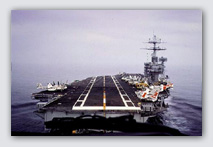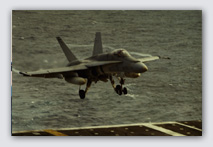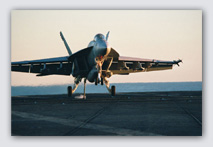Grade |
Grade |
ok |
5.0 |
ok |
4.0 |
(ok) |
3.0 |
bolter |
2.5 |
owo (waveoff) |
2.0 |
no grade |
2.0 |
cut |
0.0 |
OK:
This grade will be assigned to any pass, which, due to its perfection,
leaves the LSO speechless. (These are rare).
OK:
Small deviations with precise and timely corrections to establish
the aircraft on speed, on line-up, and on glideslope. Above average
pass.
-(OK):
A fair pass is one in which larger deviations may occur, and the
pilot initiates the proper corrections but slightly over or under
controls them. Fleet-average pass.
-BOLTER:
A below average pass, requiring a fly-around and the pilot to
re-enter the formation pattern. This is where the plane misses
any of the 4 arrestor wires.
-WAVEOFF:
Self-explanatory, the Landing Systems Officer has to wave you
off, meaning that you have screwed up this pass so bad, he doesn’t
feel safe about bringing you in for a landing on the boat.
-NO GRADE:
A no-grade pass is defined by large deviations with improper or
slow corrections to reestablish glideslope, on speed, and lineup
prior to arrestment. Engaging the #1 Cross Deck Pendent (CDP)
will normally result in a no-grade under normal conditions, (steady
wind, deck movement less than +/- four feet, targeting the 3 wire).
Below average pass.
-CUT:
You just seriously screwed up your landing, and possibly caused
damage to the boat, your plane, or the personnel on the boat.
You didn’t listen to any of the Landing Systems Officer’s
calls, and totally disregarded your environment, the only thing
you did right was put your plane on the deck (if you even accomplished
this). To many of these and your career as an aviator is over.
|



